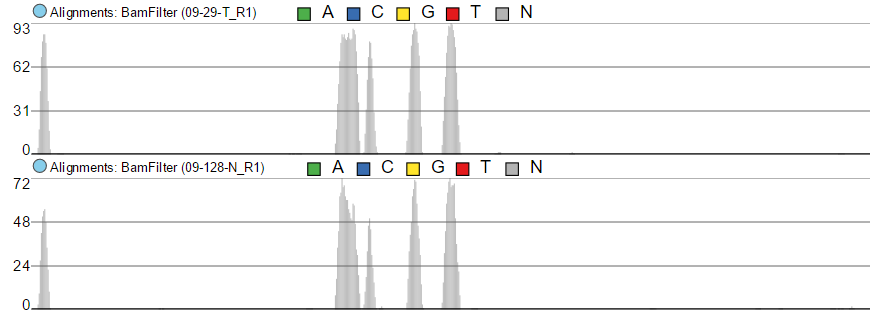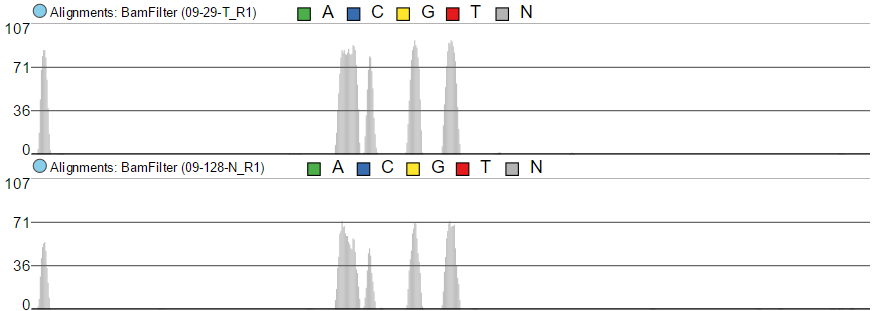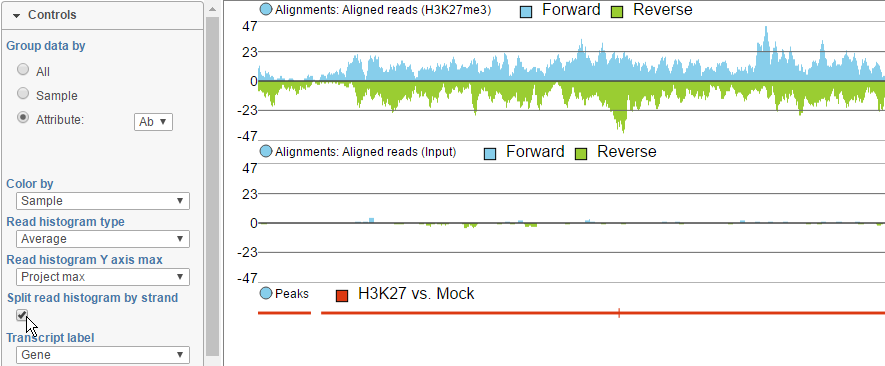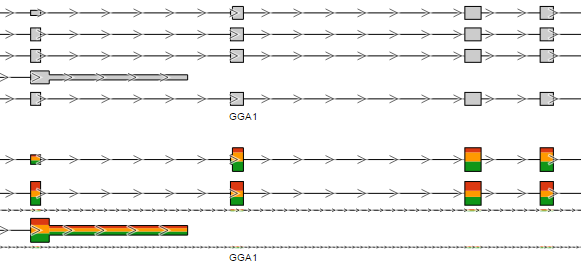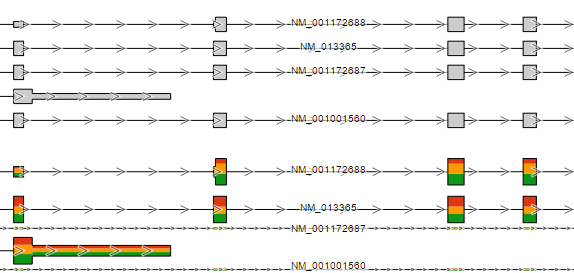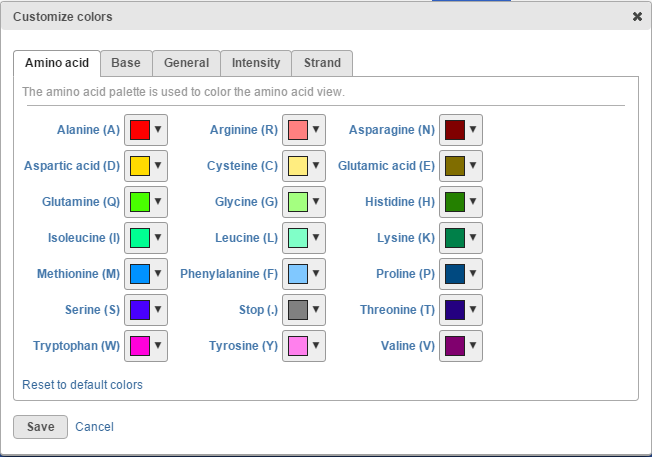Page History
...
Finally, Color by Match can be used to quickly identify mismatches against the reference genome. A matching base is coloured in blue, while mismatch bases are shown in yellow.
Read histogram Y-axis
...
max
The maximum of the y-axis of Alignments tracks is set by Read histogram Y axis scales option (Figure 7). When using Independent Project max, the y-axis for each track is set individually, based on the maximum within that sample. On the other hand, Linked Track max uses the maximum across all the samples and uses that value as the maximum for all.
...
| Numbered figure captions | ||||
|---|---|---|---|---|
| ||||
IndependentProject max LinkedTrack max |
Read histogram type
Read histogram type changes the presentation of the Alignments track and should be used in conjunction with the Group data by and Color by tracks to get the desired visualisation.
...
| Numbered figure captions | ||||
|---|---|---|---|---|
| ||||
Split read histogram by strand
To view the reads histogram grouped by the specific strand that they've mapped to, click the Split read histogram by strand checkbox. This displays the forward reads at the top half of the track and the reverse reads on the bottom half of the track (Figure 11). This track can be helpful in studies such as ChIP-Seq, where strand-specific read distributions can display hallmarks of DNA-protein interactions.
| Numbered figure captions | ||||
|---|---|---|---|---|
| ||||
Transcript label
You can use the Transcript label selector to specify labels on the reference transcript track and Isoform proportion track (Figure 1112).
| Numbered figure captions | ||||
|---|---|---|---|---|
| ||||
Transcript label: Gene Transcript label: Transcript |
...
Probe color control customizes the appearance of Probe intensities track (Figure 1314). When set to Intensity, the color of a probe reflects its intensity, using a color gradient from white (low) to admiral (high). Alternatively, when Strand is turned on, probes on the reverse strand are in parakeet green, while probe on the forward strand is in sky blue.
...
To change any of the colors on the canvas, use the Customize track colors tool. A resulting dialog will help you to pick another color (drop-down button opens the color-picker) (Figure 1415).
| Numbered figure captions | ||||
|---|---|---|---|---|
| ||||
...
The position of the tracks on canvas can be controlled by using the Track order tool. If you want a track to be visible all the time, i.e. while scrolling up or down, pin it to the top or to the bottom. Figure 15 Below shows the Cytoband track pinnned to the top of the canvas and Reference genome track pinned to the bottom of the canvas. To unpin a track, click on the pin icon ( ). The track will be unpinned and a message No tracks are pinnned to the top / bottom will appear. To pin a track, drag the track name to the No tracks… message. Alternatively, you can use the green arrows ( ) to pin a track. When you mouse over an arrow, the new position of the track will be highlighted on the canvas; click on the arrow to accept.
...
At the bottom of the control panel you will find the Selection details section (Figure 1617). It is used to display information on the element selected on the canvas (using the Pointer mode).
...
